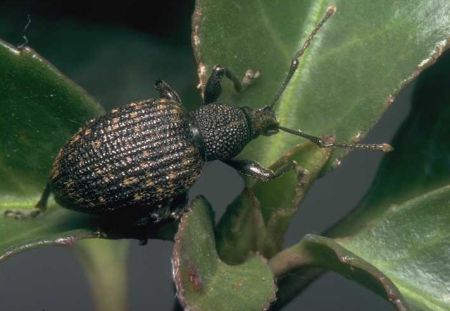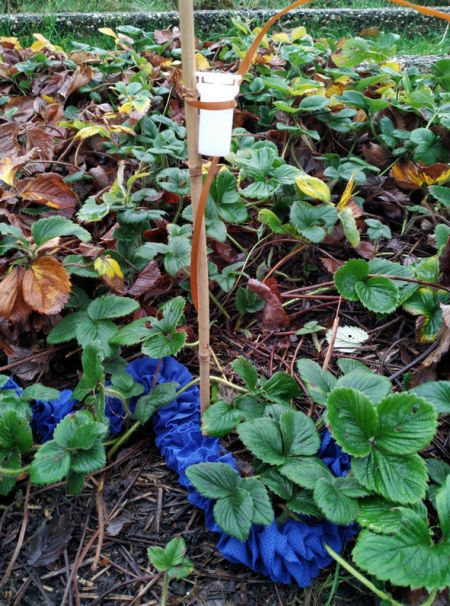Newly available Pherobank products, lure and trap for the Black vine weevil Otiorhynchus sulcatus
Otiorhynchus sulcatus
English: Black vine weevil
Dutch: Taxuskever
The black vine weevil, Otiorhynchus sulcatus, also known as the taxus weevil, feeds on a wide range of ornamental plants but is most destructive in its larval stage to yew, hemlock, rhododendron, and several other broad-leaved evergreens as well as to some greenhouse plants such as asters, cyclamens, and impatiens.
A consortium of Wageningen University, USDA-ARS and Pherobank has developed for this insect a practical attractant lure: Omnilure Otiorhynchus sulcatus. The weevil will be attracted by the kairomone to the special Ruffle trap in which the weevil will hide during daytime. The hiding weevils can be easily removed from the fabric after placing the Ruffle trap (in a plastic bag) in a freezer for a couple of hours.
The Ruffle-trap has to be placed on the ground near the crop. In case of shrubs or trees the Ruffle-trap has to be on the ground surrounding the main stem of the tree/shrub. For perennials like strawberry, Heuchera, Astilbe, Euonymus etc. the Ruffle-trap has to be placed between the plants as close as possible to the green parts and stems. In containers the Ruffle-trap should be placed in the pot around the plants. Weevils are caught best in spring at emergence from soil which in the moderate Dutch climate is around half May. In greenhouses weevils may emerge earlier in the season and the traps should be placed in the crop starting April/May. The Ruffle-trap can be used until August. From September on the weevils stop feeding, search for hiding places and go into a dormant stage. The Ruffle-trap will not catch weevils from that time on.
The Omnilure Otiorhynchus sulcatus has to be positioned at a height of approximately 20 to 30 cm above the Ruffle-trap. In shrubs or trees the Omnilure Otiorhynchus sulcatus can be attached to the plant where the Ruffle-trap is placed around.
For more information about this insect please see:
https://patents.google.com/patent/WO2011156762A1
https://www.cabi.org/isc/datasheet/38071
https://gd.eppo.int/taxon/OTIOSU
This kairomone formulated in ready-for-use lures and the Ruffle traps are now available from Pherobank.
Omnilure Otiorhynchus sulcatus, Pherobank article #: 50388
Ruffle-trap, Pherobank article #: 30270



